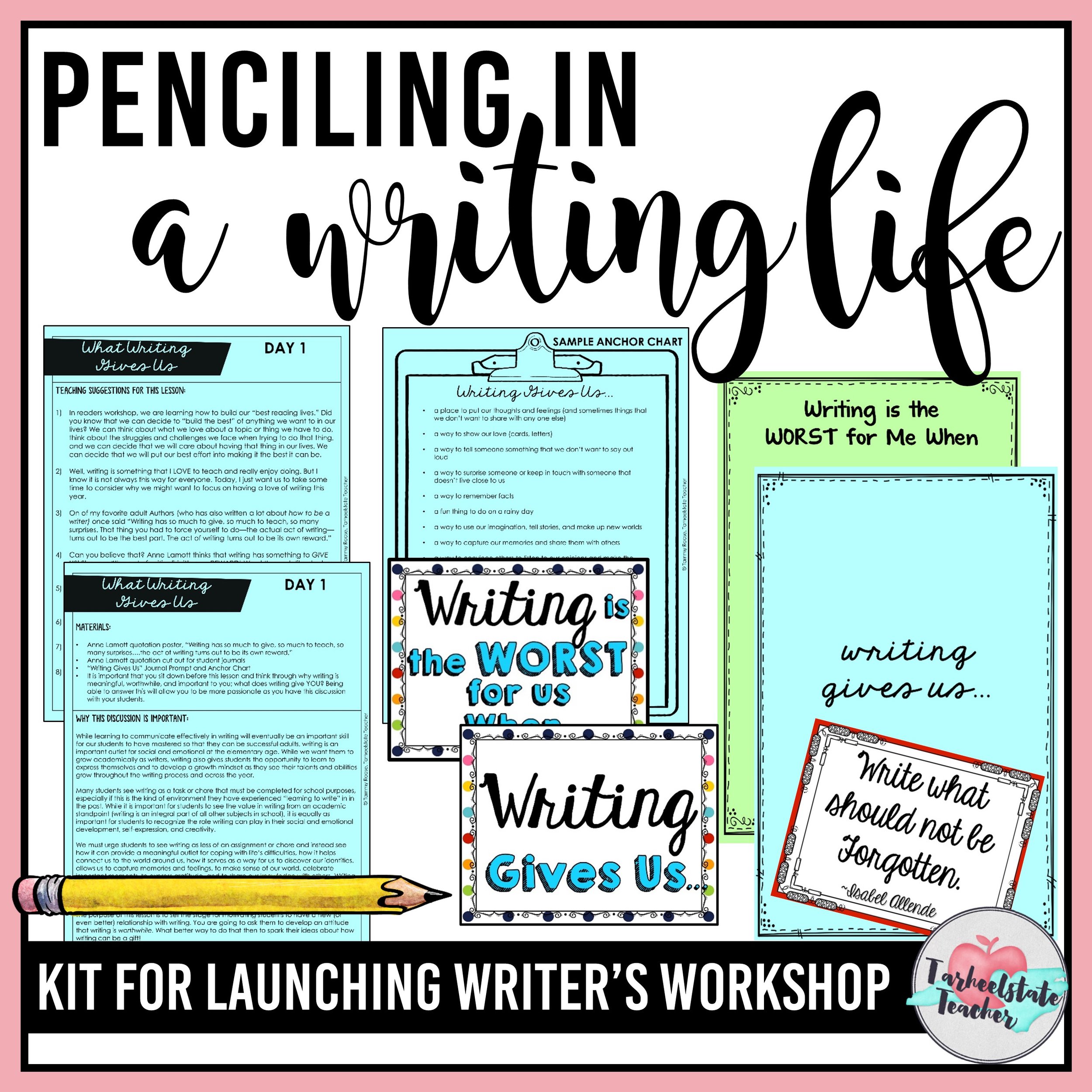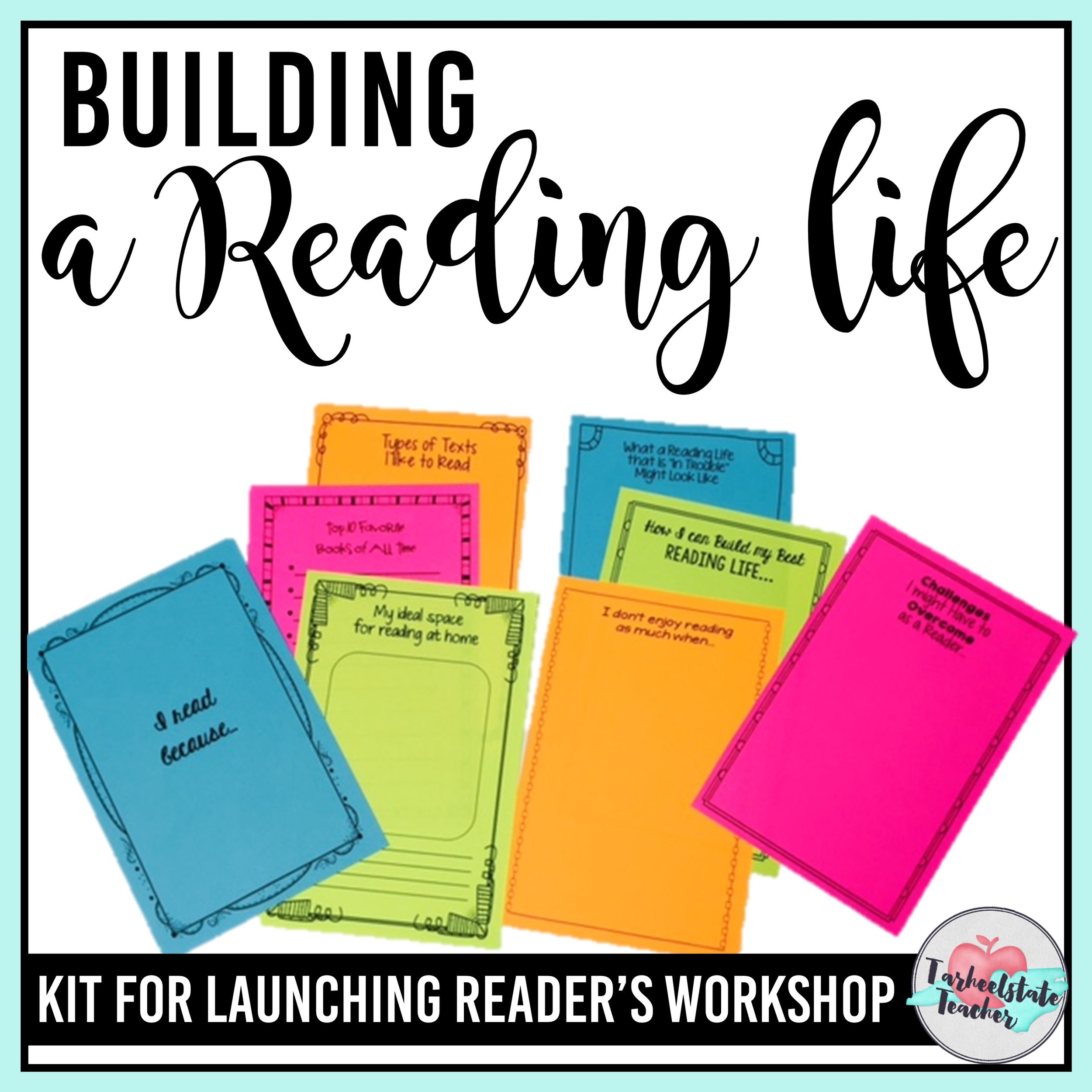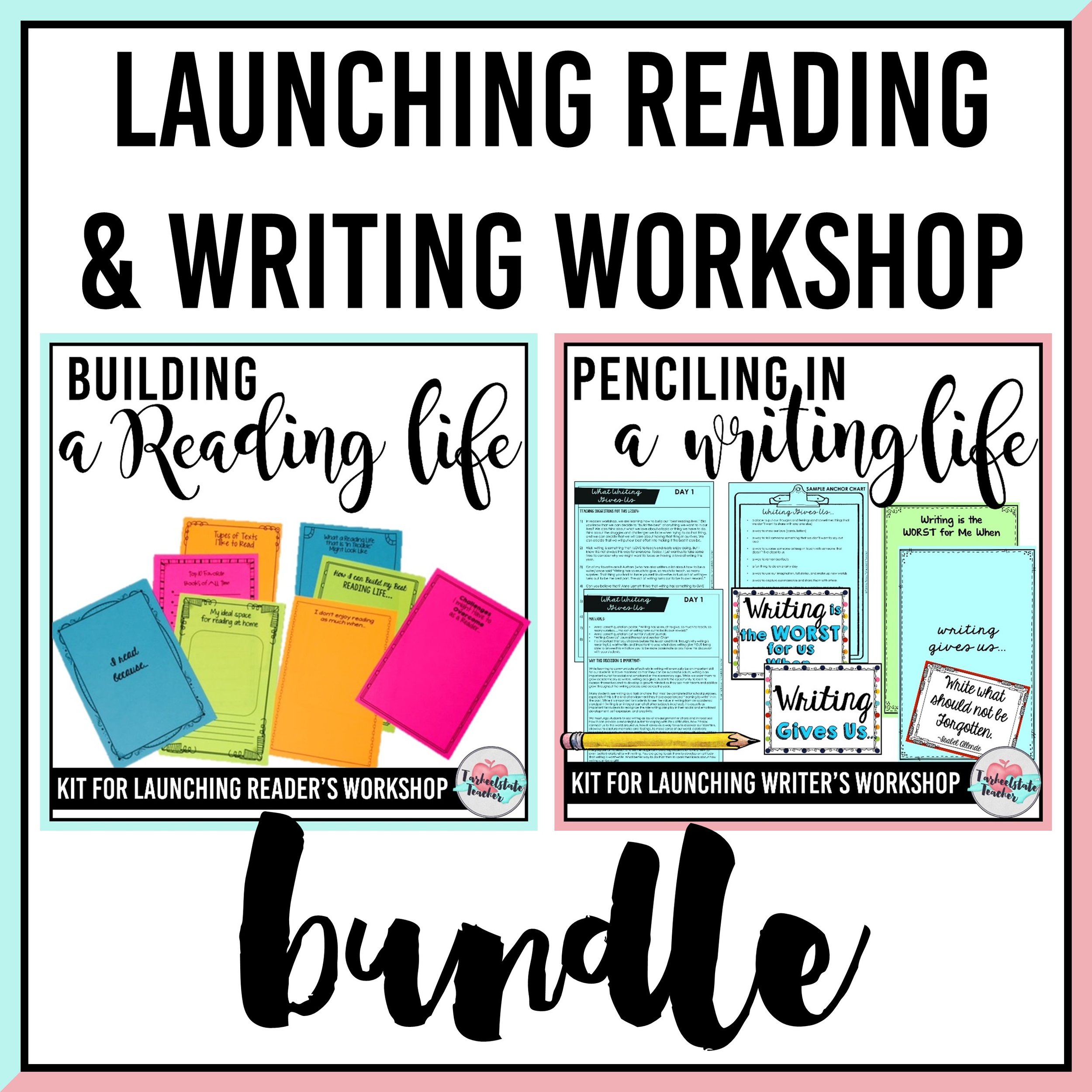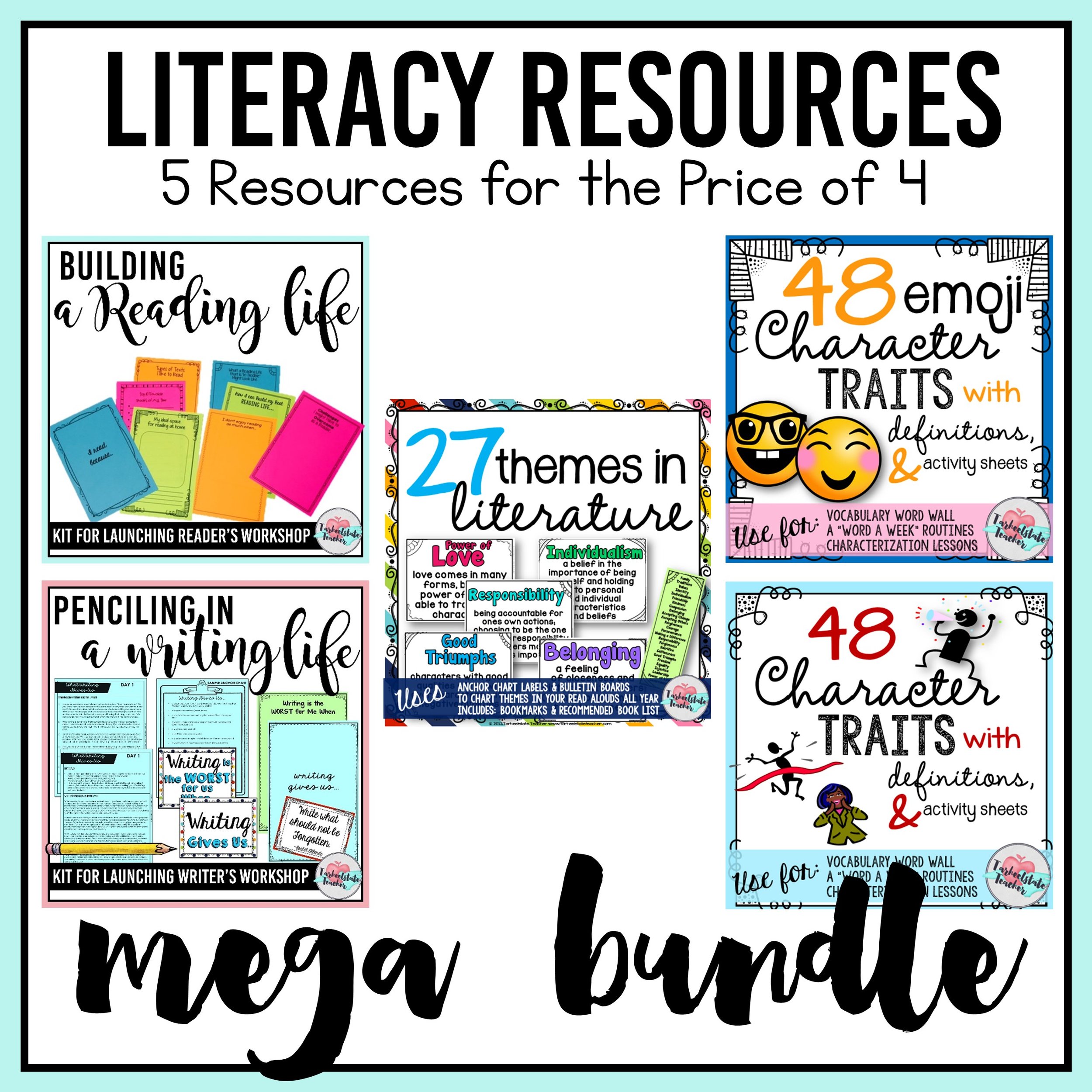First Week of School Schedule to Keep You Sane
I'm sharing the big ideas of my typical back to school schedule with you today. I'm not saying it's perfect by any means, but you are welcome to take notes and use it for your own planning inspiration if you have not yet started your first week of school. Is it really possible to grasp all that you do during your first week back with students, much less describe it to someone else? Well, I've really tried for you today!

When I plan my schedule for the first week of school, I organize it into large blocks of time that will allow me the opportunity to front load key subject areas that will often get squeezed for time after the more relaxed few weeks at the beginning of the year have passed. Think Stephen Covey and the Big Rocks (if you don't know about this metaphor, click for a video explanation. This dude has a seriously awesome mustache; you can also find videos on YouTube by searching for Stephen Covey and the big rocks, but they all had cheesy background music, so I saved you from it!)
The message is "put the big stuff first." So, when I think about the span of my year with a group of kiddos, my big rocks are 1) establishing a strong classroom community with expectations for kindness, belonging, and personal growth, 2) creating an environment where everyone loves to read, 3) introducing the concept of having a growth mindset, 4) establishing routines and procedures for reader's workshop, and 5) getting those darn writer's notebooks decorated so that my students LOVE their journals. Bonding with my students is of utmost importance to me, and I find that happens during many of the fun read alouds that I've planned and my community meeting lessons.
When you read through my schedule and what I plan to accomplish during the first week of school, you will see that my plans are literacy heavy and discussion heavy {but you expected that from me, right?}. I do A LOT of reading aloud during the first week of school. I want to establish my classroom community by devoting MORE time to community meetings than I'm able to later in the year. You will also notice that I don't usually begin serious math, science, or social studies instruction. I need time freed up to have the flexibility for fitting in get to know you activities and for students to take their time on things like decorating their writer's notebook, creating beautifully illustrated heart maps, and properly setting up their reading journals. Although it sounds odd coming from a math fanatic, I am always able to give up math during the first week of school without guilt. I really have so much I want to do with my kiddos and I know in my heart that once I start math instruction, I will have it every single day that it is humanly possible. Seriously, even an early release day or a snow day won't keep me from doing at least a little bit of math. So, not having a lot of math instruction during the first week of school works for me.
You can get the general idea of my plans by paying attention to the blue headers. You can see how I've divided my day into chunks of time, usually an hour to give me some wiggle room and flexibility. Then, as you look into each chunk of time, you can get a sense for the flow of our week and how I build concepts in those specific subject areas.


M-Collect Shared Materials, Scavenger Hunt for Classroom Materials and Spaces (have students leave out two marble notebooks to glue together for reading journal)
T-Reading Interest Survey
W-Reading For Me Last Year Was....journal reflection
Th-Cut Apart Labels/Section Dividers for Reading Journals
Fri-Start Status of the Class Meetings (students meet at the carpet to share about their independent reading)


At my last school, I had two special area classes back to back first thing in the morning. On the first day of school, I skipped specials because it just felt weird to say hello to my new students and then send them on to someone else. Skipping specials on the first day gave us a little extra time to get settled in and do an ice breaker activity. I like to choose something that gets students moving around the classroom and interacting with one another, like a get-to know you bingo or other activity. Last year, I used this free "I Found, Who Found" activity.


I use the first two weeks of my morning meeting time to introduce the 10 main themes for our classroom meetings. After week one, I use my social studies/science time to ensure that I strongly establish each theme. After the first two weeks, my meetings are only 15 minutes long when my students return from special area classes. (I wrote extensively about this in my morning meeting series.)

During Community Meeting, students complete journal pages that contain four key questions on the theme we are studying. I use these to allow students time to think and brainstorm before we have a whole-class discussion. Prior to the lesson, I prepare an anchor chart based on the questions on their journal page and record their ideas as we discuss each question.
M-Belonging Theme: Read Aloud Big Al by Andrew Clements
T-How do you define community? What are the characteristics of a community? I define community as “A Feeling of fellowship with others as a result of sharing common attitudes, interests, and goals.” Complete Belonging Journal Pages/T Chart
W-Kindness Theme: Read Aloud Each Kindness by Jacqueline Woodson (This book can fit for belonging, but I use this book to help us think about kindness)
Th-Compassion Theme: Read Aloud: How Full is Your Bucket? by Tom Rath
F-Compassion Theme Each Kindness (students re-write parts of the story in small groups to have the characters demonstrate compassion)
Other: Brainstorm Necessary Classroom Jobs (usually on Thursday/Friday so that students have had the opportunity to see what our needs might be); allow students time to complete job applications.
You can find the student journal pages, key vocabulary for each them, and additional suggested read alouds and activities in my Morning Meeting Made Easy Theme sets. The Belonging Theme Set is available for free so that you can get a taste for how I've structured my morning meetings. You can also revisit my 10 Part Series on Implementing the Morning Meeting that I wrote last year.


M-Introduce "Heart Mapping," share my own "About Me" powerpoint and my heart map; Make Lists in Writer's Notebook for Heart Map Ideas: People and Pets I Love (special, important, enjoy spending time with, people I miss, etc), Places I Love, Things I Love/Love to Do, Fears {You can learn more about heart maps here, and you can find free heart mapping templates here, here, and here.}
T-Sketch/Plan Heart Maps
W-time to search magazines for images to use on writer's notebooks (try to find images that connect to heart maps)
Th-cover writer's notebooks with magazine pictures/collage
F-Illustrate/Color Heart Maps (I like to save this for Friday to build some quiet, calm time into our Friday! I may even move it to the afternoon so that we end our week with some much needed down time!)
During our second week of school, I launch my Penciling in a Worthwhile Writing Life unit where I encourage students to verbalize their best and worst writing times. This unit mirrors my Building a Reading Life unit for Readers Workshop.



Everyone's favorite time of the day! Who's ready for a break and time to run around in the sunshine? Before we leave for lunch and recess, I remind students to make sure that everyone is included and that no one feels like a "Big Al." At lunch, I watch student interactions and try to get to know more about my students' personalities and how they fit into the group.

M-Launch Building a Reading Life Unit
Discuss and Journal: "Reading is the Worst for Me When" Read Aloud: Aunt Chip and the Great Triple Creek Dam Affair by Patricia Polacco (Click to read the full minilesson)

T-Journal/Discuss Why Read? I read because...journal page; Finish Aunt Chip read aloud;

W-Why Read? Reading is FREEDOM! Read Aloud: Richard Wright and the Library Card by William Miller
Th-Reading is the Best for Us When (journal page/anchor chart)
F-Read Aloud:
A Quiet Place by Douglass Wood; Discuss best spaces for reading; My Ideal Space for Reading At Home (students journal-describe and sketch)

In addition to having my minilessons focus on building a reading life, I teach all of those lessons that help my students get ready for the routines and procedures of our reading workshop. These include learning how our library is organized, discussing when it's appropriate to choose books, giving them time to search through book bins and make a list of books they might like to read, having them choose three books to place in their book boxes to get ready for my "choosing just right books" lesson, setting up reading journals, and learning how to come to the carpet and what norms we will follow while there.
I like to make a checklist of all the routines I need to address for readers workshop and just check them off throughout the week as I get to them.
You can read all about my minilesson for readers workshop on the first and second days of school.

I use the anchor chart parts, quotations, and student journal pages from my Building a Reading Life Launch Kit to plan my Building a Reading Life unit.



M through F-Inevitably, I will not get to my Growth Mindset lesson on the first day. However, on Day 2 and beyond, I ensure that I introduce a lesson a day.
Angela Watson's Growth Mindset materials are just perfect. I prepared the student journal pages as a booklet and previewed the videos and lesson plan each day before teaching the lesson. She makes it so easy to implement with detailed lesson plans and discussion questions. My students immediately understood the research behind growth mindsets, learned how to re-frame negative thinking, and applied this concept all year.
Angela’s Growth Mindset unit is worth every penny, and I'd use it every-single-year. You get 10 lessons with links to videos to help discuss each one, student journal pages, and posters to hang in the classroom. My students especially loved watching the videos and learning from them. They were short enough that I showed them twice during each lesson. Also, they are designed to take 30-45 minutes, so you can really set a growth-minded foundation for you students in a short amount of time.
In addition to Angela's Growth Mindset Lessons, I make sure to include a growth-mindset themed mini-unit in my morning meeting plans for later in the year. This is a great way to refresh and build upon the lessons we learn early in the year about having a growth mindset.


For the last 30 minute or so of our day, I work off of my checklist of things that either I've remembered we need to do or that I want to get accomplished. This is a great time to make sure students have a book to take home, let them search the classroom library, play math games, or work on something that they need more time on earlier in the day. (Last year, I used this free Multiplication Game from The Teacher Studio. We pulled it out a few times. This is a great time to observe who's doing well with their multiplication facts and how students interact with one another. I'd suggest mixing up partners each time to observe behavior). At some point in the week I will probably also use this time to help students go through their materials and set up their binders. I take their dividers away from them and write on them myself. {Such a sanity and class-time saver--and they all end up in order, right-side up, and neatly written.}
If I've learned one thing from 11 years of having the first day of school, it's that those kiddos, no matter how hard you try, have to listen to a lot of teacher talk and directions. It helps to have some hands-on, partner activities and some quiet time activities built into the day. I also have to go over the routine for dismissal, which can either take a looooooooong time or go smoothly (happy face), depending on the group.

My best advice for planning your first week back to school is to be sure to get the time consuming stuff done during that first week. For me, this includes covering students' writers notebooks (and the oh, so fun task of covering them with contact paper to preserve their hard work), setting up binders and organizing materials, and setting up reader response journals with the sections I want them to have.
My main goals for this week are to ensure that my students understand two things:
1) first and foremost, I expect them to uphold an inclusive environment, where everyone is respected, included, and treated with respect. No one should feel like a "Big Al"
2) Creating a Reading Life that is full of passion for stories and books is extremely important and worthwhile and I will be a huge part of helping them fall madly in love with books.
And, of course 4th (or 5th) grade is going to be totally awesome, the best year they’ve ever had!

If I have ended my first week of school and accomplished those two things, I can rest easy and let go of the stress of all the things I didn't accomplish. If I have kind students who are working as a team with myself and their classmates, who are eager to build the best reading lives ever, and who are putty in my hands when I read aloud, who go home telling their parents they had a great day at school, I know it is going to be a great year!
If you want to hang on to the ideas in this post, you can use this image to pin it to your back to school pinterest boards!
PS: My newsletter subscribers receive my 10-Day Reader's Workshop Outline and the Ideal Environment Lesson's Anchor Chart part and Journal Page. Subscribe now to grab your copy plus other exclusive freebies!!
SHOP THE RESOURCES:




